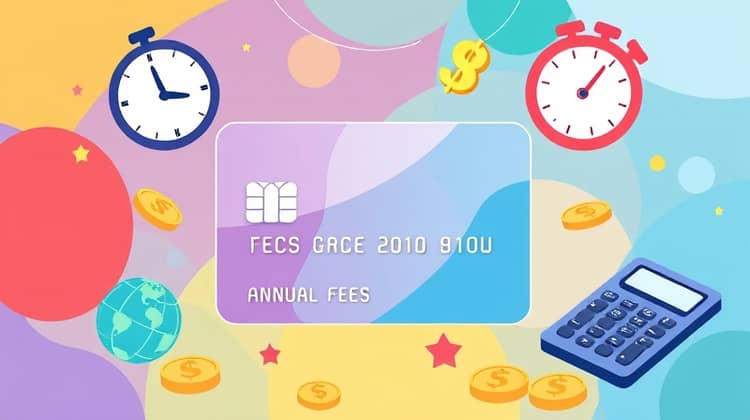Understanding your credit card statement is crucial for maintaining your financial health. It serves as a detailed record of your spending habits, balances, interest rates, and any fees that may apply. By learning how to interpret these documents, you can avoid overspending, manage your payments efficiently, and take advantage of any relevant rewards.
Regularly reviewing your credit card statement will empower you to stay in control of your finances. This guide aims to provide you with a comprehensive understanding of what to look for when reading your credit card statement. From basic information to fees and rewards, the insights you gain will be invaluable in your financial journey.
1. Introduction to Credit Card Statements

Credit card statements are more than just summaries of your monthly charges; they are vital documents that provide insight into your financial habits. Every cardholder receives a statement each month, which includes important details about current balances, past transactions, and payment information.
Familiarizing yourself with the structure and content of your credit card statement is essential for effective budgeting and financial management. A typical statement includes various sections that reflect your spending, fees, interest rates, and account activity.
- Your account number
- Billing cycle dates
- Transaction history
- Balance summary
- Payment due date
By understanding these key elements, you'll be better prepared to manage your credit effectively and make informed financial decisions.
2. Basic Information on Your Statement

At the top of your credit card statement, you'll typically find your personal information and account number. This section establishes who the statement belongs to and provides a baseline for the charges and payments that will be discussed further down in the document.
Additionally, your statement will outline the billing cycle, which indicates the timeframe for transactions included in the current statement. This is critical to note for your budgeting, as it informs you about when charges are applied and when payments are due.
3. Understanding Your Balance

A significant part of interpreting your credit card statement is understanding your balance. The balance consists of several components, including the previous balance, payments made, new purchases, and any additional fees or interest charges that may have accumulated during the billing period.
The overall balance shown may seem overwhelming, particularly if you are not used to tracking your spending closely. However, breaking it down into manageable parts can provide clarity and help ensure you're staying within your budget. It enables you to identify trends in your spending and plan for upcoming payments more effectively.
Understanding your balance also helps you leverage your credit card responsibly, avoiding fees and interest that arise from unpaid balances.
a. Previous Balance
The previous balance is the amount owed on your credit card at the end of the last billing cycle. This figure can provide insights into how you've managed your spending and payments leading up to the current cycle.
Reviewing your previous balance can help you identify recurring expenses and assess areas where you might want to cut back.
b. Payments and Credits
This section showcases the payments you've made and any credits applied to your account since the last statement. Understanding this part of your statement is crucial in assessing how much you've reduced your overall balance and how payment patterns impact your financial health.
Regularly checking your payments and credits can help you maintain good standing with creditors, ensuring you’re making responsible financial choices.
c. Purchases
This part lists all transactions made during the billing cycle, giving you clear visibility into where your money is going. It’s essential to regularly review your purchases to ensure accuracy and identify any unauthorized charges.
By tracking your purchases, you can gain insights into your spending habits and look for trends that can help you budget more effectively.
d. Cash Advances
Cash advances often come with higher fees and interest rates, so it's crucial to assess this section of your statement closely. Cash advances can significantly impact your balance and should be managed carefully to avoid unexpected charges.
If you've utilized cash advances, it is wise to prioritize paying them off as quickly as possible to mitigate the costs associated. They can quickly accumulate and eat into your available credit limit.
- Higher interest rates than standard purchases
- Fees associated with taking a cash advance
- Potential impact on your credit score
Effectively managing cash advances involves strategic planning to ensure they do not destabilize your financial situation.
4. The Interest Rates Section

Understanding the interest rates associated with your credit card is vital for making informed financial decisions. This section typically lists the Annual Percentage Rate (APR) for purchases, cash advances, and balance transfers.
Being aware of these rates will help you evaluate the cost of carrying a balance on your card versus paying it off immediately.
- APR for purchases
- APR for cash advances
- APR for balance transfers
Knowing your interest rates is essential for effective credit management. Delay in payments can lead to significant interest accumulation, so it's always advisable to pay off your balance in full if possible.
5. Fees: What You Need to Know

Credit cards can come with various fees that may catch cardholders off guard. This section outlines any fees incurred during the billing cycle, which can include late fees, annual fees, or foreign transaction fees.
Understanding the potential costs associated with your credit card use is vital to avoid financial pitfalls.
- Annual fee
- Late payment fee
- Foreign transaction fee
By being aware of these fees and their impact on your overall credit costs, you can make informed decisions about using your credit card responsibly.
6. The Summary of Account Activity

This section provides an overview of your account activity for the billing cycle, allowing you to see all relevant changes at a glance. It acts as a quick reference guide to your credit health and spending behaviors.
Reviewing your account summary regularly is essential for monitoring your credit utilization and managing your financial landscape effectively.
7. The Payment Information Section

In this section, you'll find vital information about your minimum payment due, total balance, and the due date for your payments. Staying on top of this information is key to avoiding late fees and adverse effects on your credit score.
Being prompt with payments is essential in maintaining a healthy credit profile and minimizing interest charges, so take the time to review it carefully each month.
8. Reading the Statement Message

Many credit card issuers include an informational message on the statement outlining important changes or reminders for cardholders. These messages may include information about upcoming changes to terms or fees.
By paying attention to these messages, you can adapt swiftly to any new policies that your credit card provider might implement, ensuring you're always in the know.
9. The Transaction Details Section

This section provides the most granular details of each transaction made during the billing cycle, including purchase dates, amounts, and merchant names. It’s essential to comb through these details for accuracy and to spot any unauthorized charges.
Reviewing your transaction details regularly can help you assess your spending categories and identify opportunities for savings or budget adjustments.
10. Rewards Summary (if applicable)

For cardholders enrolled in a rewards program, this section summarizes the points, cashback, or rewards earned during the billing cycle. Taking note of your rewards can incentivize more strategic spending to maximize benefits.
Understanding how to accrue and utilize your rewards can enhance your credit card experience, making it more rewarding overall.
11. Important Changes to Your Account Terms

It's crucial to stay informed about any changes to your account terms, which can affect your usage of the credit card. This section typically highlights any new fees, increased interest rates, or changes in rewards programs.
Reacting to these changes promptly can save you money and help you adjust your spending practices accordingly.
12. Customer Service Information

Customer service contact information is essential to have on hand should you need assistance or have questions regarding your statement. This section typically provides various ways to reach customer service, making it easier for you to resolve any issues.
Knowing how to reach customer support ensures you can address any discrepancies or concerns effectively, helping maintain your credit health.
13. Conclusion: Why It’s Essential to Read Your Statement

Reading your credit card statement is a vital practice for anyone who holds a credit card. It equips you with an understanding of your financial standing and guides you in making informed spending decisions.
By familiarizing yourself with your statement, you can limit unnecessary expenses, maximize reward opportunities, and keep a steady grip on your finances. Ultimately, it helps you take full control of your financial future.
14. Tips for Managing Your Credit Card Statement

Managing your credit card statement efficiently is key to maintaining a healthy financial life. Here are a few tips to help you streamline this process:
Create a routine to review your statement monthly, ensuring you catch any errors or unauthorized charges early.
- Set reminders for payment due dates
- Utilize budgeting tools to track spending
- Consider setting up automatic payments for the minimum due
By implementing these tips, you can maintain a healthier credit profile and make the most of your credit card benefits.














